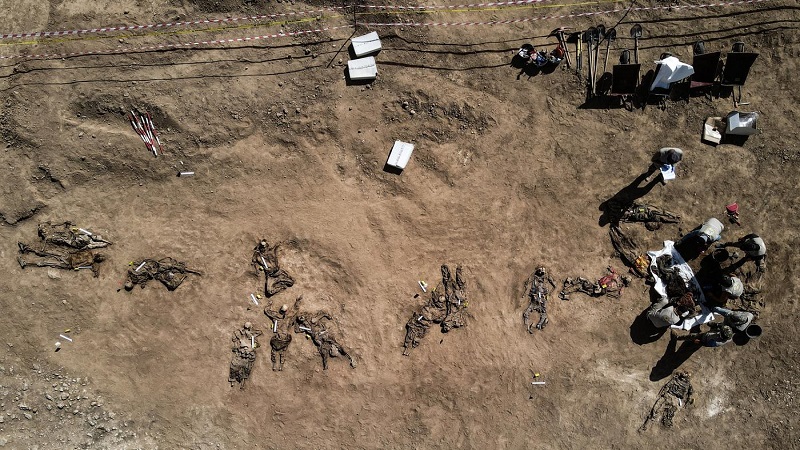Iraqi authorities said Sunday the remains of 123 people killed by Islamic State (IS) group militants had been removed from a mass grave in the Nineveh governorate in order to start the process of identifying them.
In one of its worst crimes in Iraq, IS carried out a massacre at Badush prison in June 2014 after it captured a third of Iraq in a lightning offensive that year.
IS militants had attacked the prison in the village of Badush, northwest of the city of Mosul, to free Sunni Muslim inmates and forced 583 mainly Shia Muslim prisoners into a truck, before driving them to a ravine and shooting them.
The mass grave was found after Iraqi forces seized control of the area in March 2017. In recent weeks, dozens of family members have given blood samples to be compared to the DNA of the remains.
“Thousands of families are waiting to know what happened to their relatives,” Najm al-Jubburi, governor of Nineveh, told AFP.
The mass grave is one of more than 200 the extremist group left behind in its rampage of brutality, according to the United Nations.
The remains of up to 12,000 people are believed to be buried in these graves, the UN says, which has accused IS of having committed genocide in Iraq.
The families of the victims have struggled for years without closure.
“After 17 years of not knowing whether my son is alive or dead, I need an answer,” Abbas Mohammed, whose son was jailed at Badush following his arrest by US forces in 2005, told AFP.
Grim history
Saleh Ahmed, a member of the government commission tasked with identifying the “martyrs”, said the work is being done under difficult conditions.
“The heat is overwhelming. Some remains are entangled, and there are snakes and scorpions everywhere,” he said, as 30 workers removed bodies from the grave.
Iraq has been struggling to identify remains of people from several violent episodes in its recent history, and is still discovering mass graves from the regime of executed dictator Saddam Hussein.
In February, the remains of 104 Yazidis murdered by IS militants in August 2014 were returned to their village, Kojo, in the Sinjar district of the Nineveh governorate to be buried.
The bodies had recently returned from Baghdad after the completion of examination and identification procedures.
IS militants had blocked the road between Kojo and Mount Sinjar, and besieged the village for 11 days before storming it and carrying mass executions of the Yazidi men and old women who refused to convert from the Yazidi religion to Islam, according to testimonies of survivors.
By 15 August that year, at least 2,700 Yazidi men had been killed, more than 6,400 women and children had been kidnapped, 350,000 had been displaced and more than 80 mass graves were dug to bury the Yazidi victims.
Source: Middle East Eye






 WhatsApp us
WhatsApp us 

